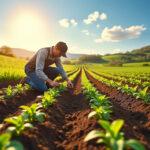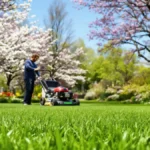Planting pumpkins at the right time sets the foundation for a bountiful harvest. This article explores the optimal timing, best practices, and essential considerations to ensure thriving pumpkins that are ready for festive occasions.
Understanding the Ideal Planting Period for Pumpkins
For most regions, the ideal time to plant pumpkin seeds generally falls between late May and early July. This timeframe allows pumpkins to grow during the warm summer months, ensuring they mature in time for Halloween and Thanksgiving festivities. Timing is crucial; planting too early may cause pumpkins to become mushy, while waiting too long can result in a missed harvest.
Factors Affecting Pumpkin Planting
Several elements influence the decision of when to plant pumpkins. First, it’s essential to consider local climate conditions. Pumpkins thrive in warm soil, typically requiring a soil temperature of 60°F to 85°F for optimal germination. Monitoring soil warmth and ensuring that all threat of frost has passed are fundamental before planting.
Selecting the Right Varieties for Your Needs
Choosing the appropriate pumpkin variety plays a significant role in achieving a successful crop. Whether the goal is for culinary use, ornamental displays, or Halloween decoration, each variety has distinct characteristics worth noting.
| Variety | Type | Best Use |
|---|---|---|
| New England Pie | Heirloom | Culinary |
| Connecticut Field | Heirloom | Carving |
| Big Max | Hybrid | Display |
| Jack Be Little | Miniature | Decorative/Tabletop |
Heirloom vs. Hybrid Varieties
Heirloom pumpkins, with their rich history and unique flavors, include varieties like ‘New England Pie’ and ‘Connecticut Field,’ which are celebrated for their culinary qualities and carving potential. Conversely, hybrids such as ‘Big Max’ are cultivated for specific traits, ensuring consistency and disease resistance; however, seeds from hybrids may not always reproduce true to type.
Preparing the Pumpkin Patch for Success
Meticulous soil preparation is key for growing healthy pumpkins. Ensuring that the soil is nutrient-rich and well-drained is vital. Mixing organic matter such as compost or aged manure enhances soil fertility, structure, and drainage capabilities.
Soil Requirements and Techniques
The ideal soil pH for pumpkins ranges between 6.0 and 6.8, as this range affects nutrient availability. Furthermore, utilizing the hill method of planting, where seeds are sown in mounds spaced about 4-8 feet apart, promotes adequate drainage, warming, and air circulation.
Growth and Care for Healthy Pumpkin Plants
Once planted, diligent care is crucial for nurturing pumpkin plants through to harvest. Regular watering, particularly in the early stages, is essential for root development. Aim for at least one inch of water weekly.
| Control Method | Target Pest/Disease | Frequency |
|---|---|---|
| Handpicking | Squash Bugs | Weekly |
| Neem Oil | Aphids, Beetles | As Needed |
| Fungicide | Mildew | At First Sign |
Staying vigilant against pests and diseases like squash bugs and mildew will safeguard plant health. Regular inspections and prompt treatment can prevent significant damage to the crop.
Harvesting Pumpkin: Timing and Techniques
The time for harvesting pumpkins arrives when the rind achieves a deep, solid color, typically orange, and resists fingernail marks. It’s crucial to harvest pumpkins before the first frost, employing sharp tools to cut the stem, allowing some inches to remain attached to the fruit to avoid rot. 🌟
Post-Harvest Care and Uses
Post-harvest, pumpkins should be cleaned and cured in a cool, dry area for about two weeks to enhance shelf life. The flesh can be prepared for cooking, while the seeds can be separated, rinsed, and roasted for a nutritious snack.
When to plant forget-me-nots for optimal growth
Frequently Asked Questions
Q: When can I start planting pumpkins?
A: Plant pumpkin seeds from late May to early July, depending on the local climate and frost risk.
Q: What is the best way to prepare the soil?
A: Amend the soil with compost and ensure a pH between 6.0 and 6.8 for optimal growth.
Q: How do I know when my pumpkins are ready to harvest?
A: Pumpkins should be harvested when they have a deep, solid color and the rind is hard.
Q: Are hybrids easier to grow than heirloom pumpkins?
A: Hybrids are often bred for disease resistance and uniformity, making them reliable for consistent results.
Q: Can I grow pumpkins in the fall?
A: No, pumpkins cannot be planted in the fall for harvest in the same season as they require warm conditions to thrive.
















